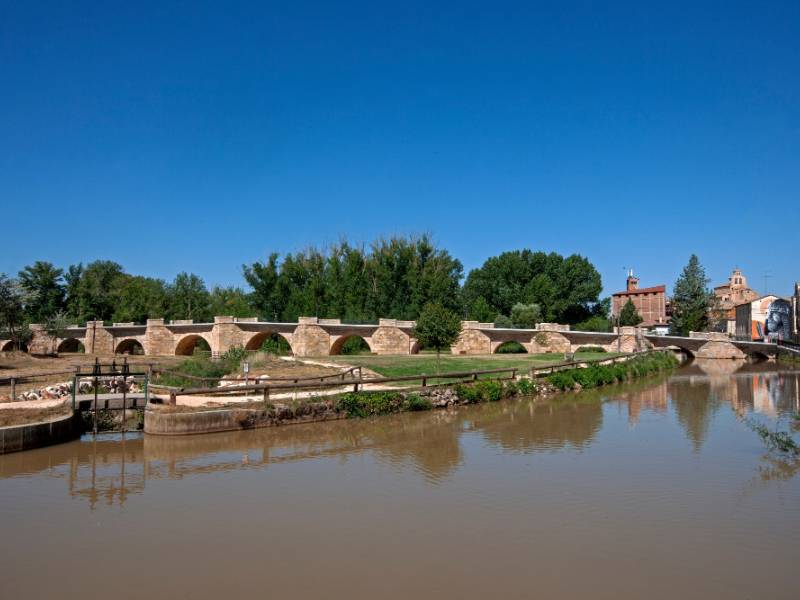Route of the Cid
- Position
- Burgos province
- Spain province
- Type of route
- Several days
The Route of the Cid is a cultural tourist trail that retraces the footsteps of Rodrigo Díaz de Vivar, the great nobleman and warrior known as ‘The Cid’. The itinerary is based on The Poem of the Cid, one of universal literature’s greatest medieval epic poems.
The Route of El Cid starts in Vivar del Cid, in the province of Burgos, taking us through no fewer than eight Spanish provinces: Burgos, Soria, Guadalajara, Zaragoza, Teruel, Castellón, Valencia and Alicante.
The itinerary is divided into themed routes of between 50 and 300 km. Two of them, the Route of Exile and the Borderlands, cross the lands of Castilla y León in the provinces of Burgos and Soria.
The routes are signposted and can be followed either along paths and countryside tracks, or on secondary roads with little traffic.
Prepare your visit
Find out
Data of interest
About The Cid
Rodrigo Díaz was born at the end of the first half of the 11th century. In 1058 he joined the court of King Ferdinand I, and on his death, he began to serve King Sancho of Castile, who appointed him the royal standard bearer. His many victories in battles against other knights would soon earn him the title of El Campeador - the ‘Outstanding Warrior’.
In 1072, during a fratricidal struggle, King Sancho was killed in the siege of Zamora. He was succeeded by his brother Alphonse, who became King of León, Castile and Galicia.
Following the change of monarch, The Cid lost much of his power and influence, and the constant frictions at the new court - where The Cid had powerful enemies - resulted with him being sent into exile in 1081. After leaving Castile, he entered the service of the Muslim kingdom of Zaragoza, where he reaped numerous victories leading armies made up of Christians and Muslims.
The Poem of the Cid
The Cid died in 1099 as Prince of Valencia, the city that would be governed by his wife Jimena until it was conquered by the Almoravids in 1102. Following his death, The Cid’s reputation as an invincible warrior spread rapidly in the Christian lands that bordered with those ruled over by the Muslims. Many troubadours and poets sang of the warrior’s feats, although the best-known of all is The Poem of the Cid, written in the early 13th century, a hundred years after his death.
The origins of the poem most probably lie in the lyrical tradition that surrounded this historic figure, which was used and elaborated on by the author or authors, although the facts were altered and magnified by the passing of time. Indeed, The Poem of the Cid is not a historical tale, as many of the events narrated are fictitious, although it is true that its origins are rooted in a true story.
The Route of the Cid. Practical information
The Route of the Cid is a cultural tourist itinerary that crosses regions that during the Middle Ages formed major boundaries. It passes through peaceful countryside settings of immense historical, artistic and natural value. The Route of the Cid can be followed in any of the following ways:
- Hiking
 , mainly along countryside tracks and paths.
, mainly along countryside tracks and paths. - By off road - MTB bike
 , mostly along countryside tracks and paths.
, mostly along countryside tracks and paths. - Classic cycle tourism along secondary roads with little traffic
 : suitable for cyclists that prefer tarmac to dirt tracks.
: suitable for cyclists that prefer tarmac to dirt tracks. - By motor vehicles
 : cars, motorbikes, etc., along secondary roads and a number of main roads.
: cars, motorbikes, etc., along secondary roads and a number of main roads.
The Route of the Cid offers two itineraries as it makes its way through Castilla y León: the Route of Exile and the Borderlands, with lengths of between 270 km and 370 km depending on the chosen means of transport. All sections of the route are signposted.







